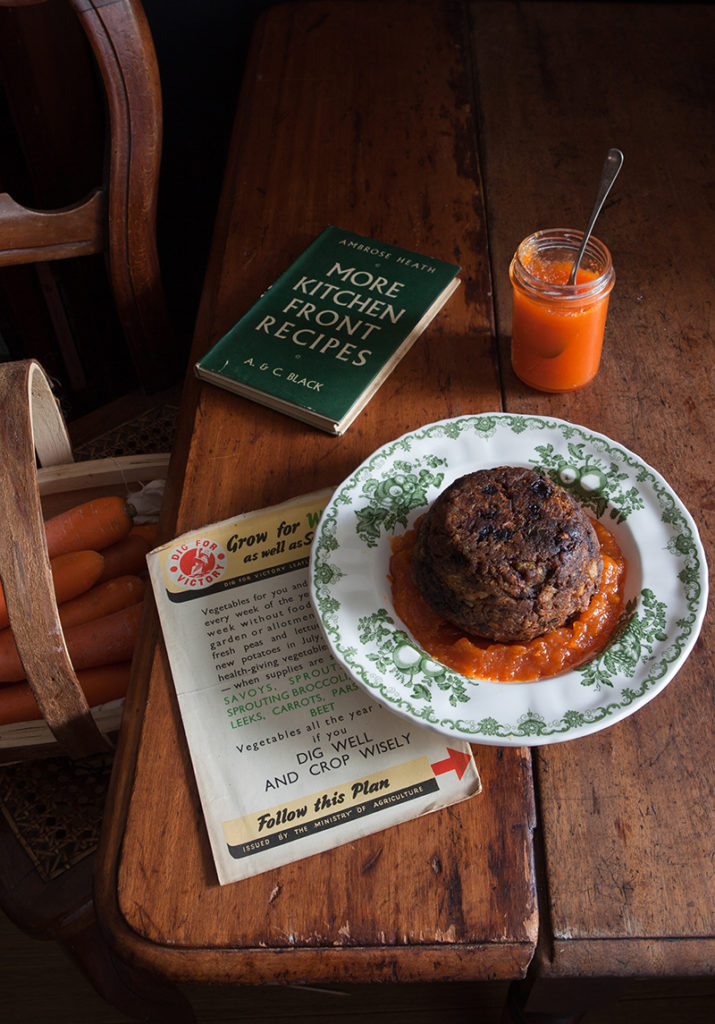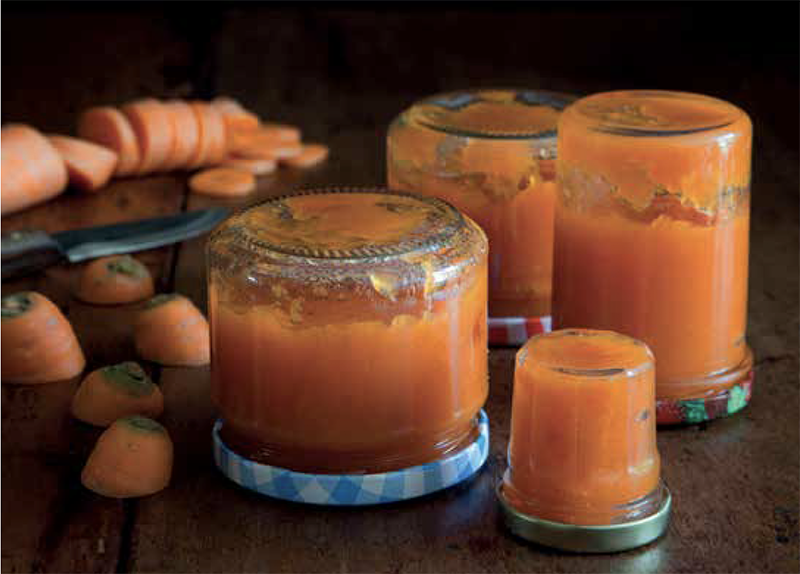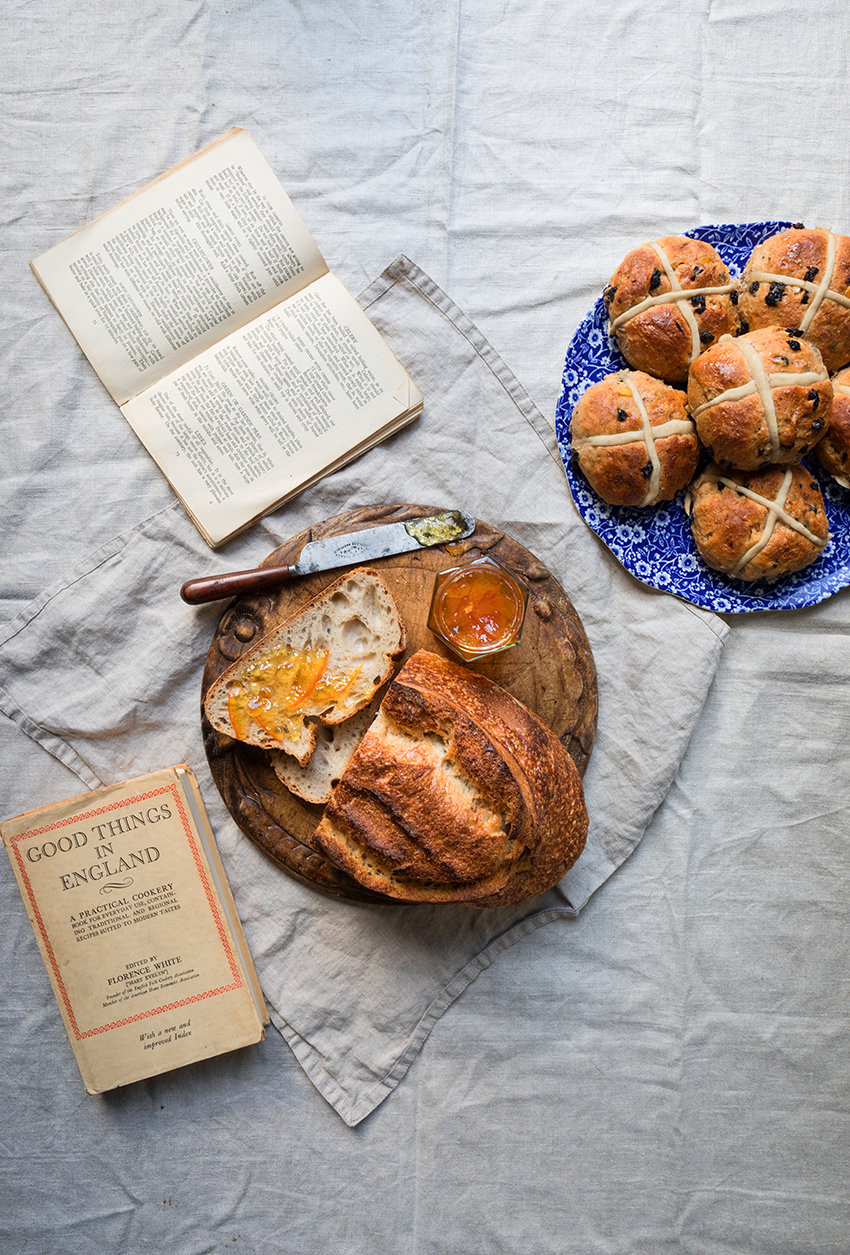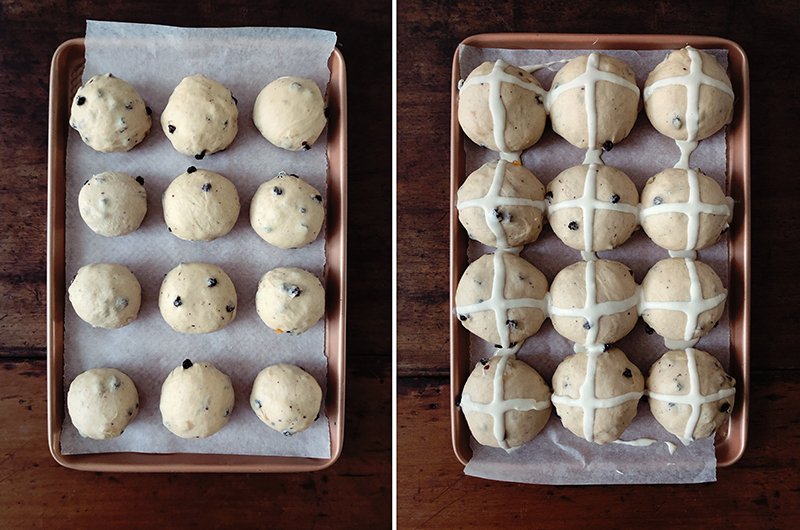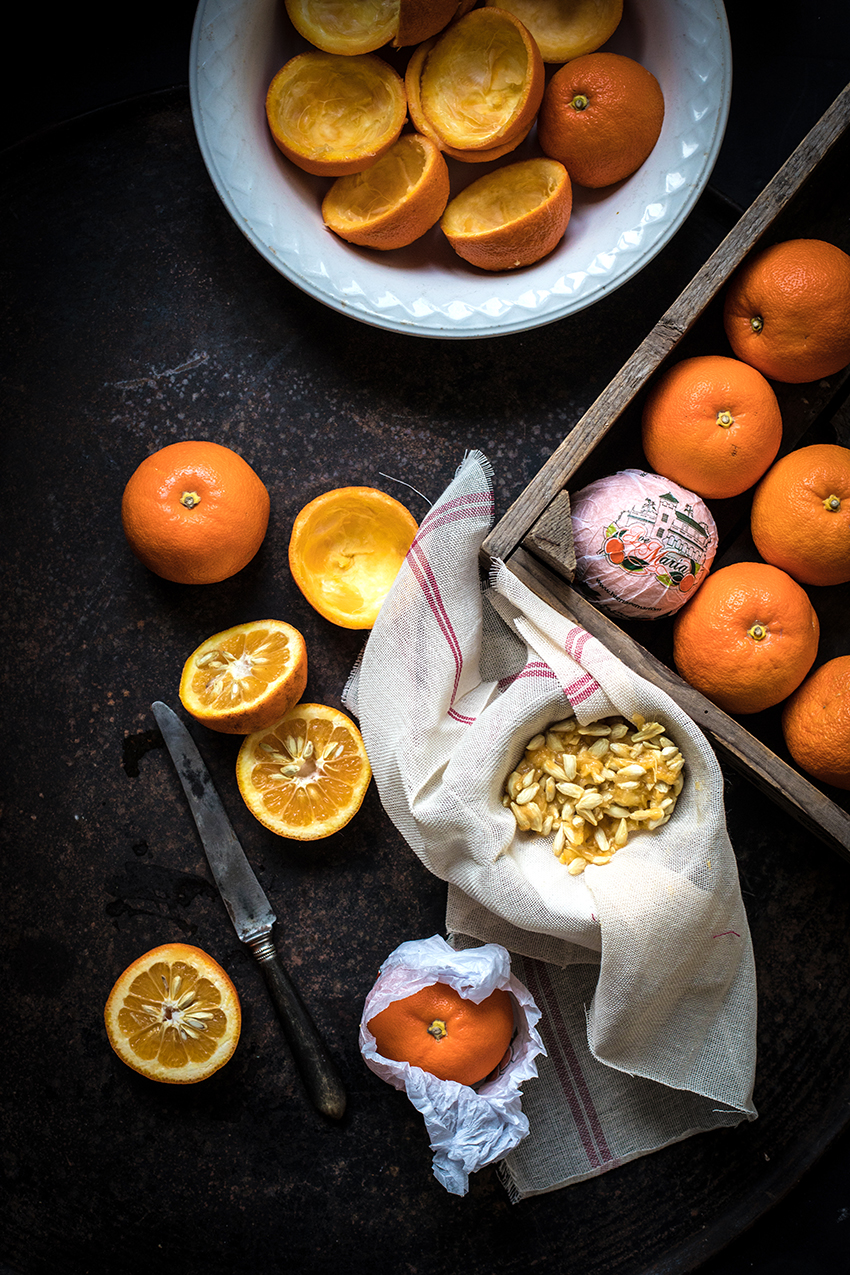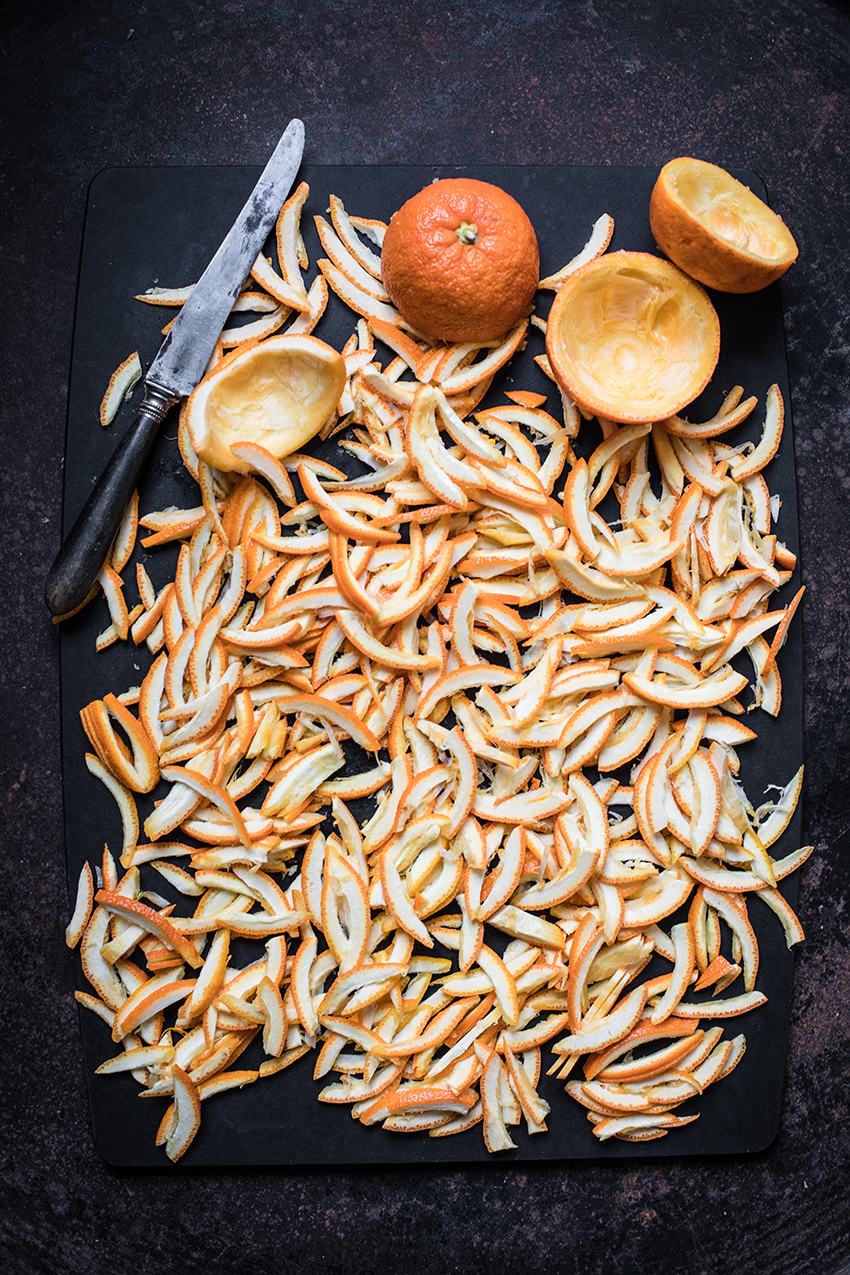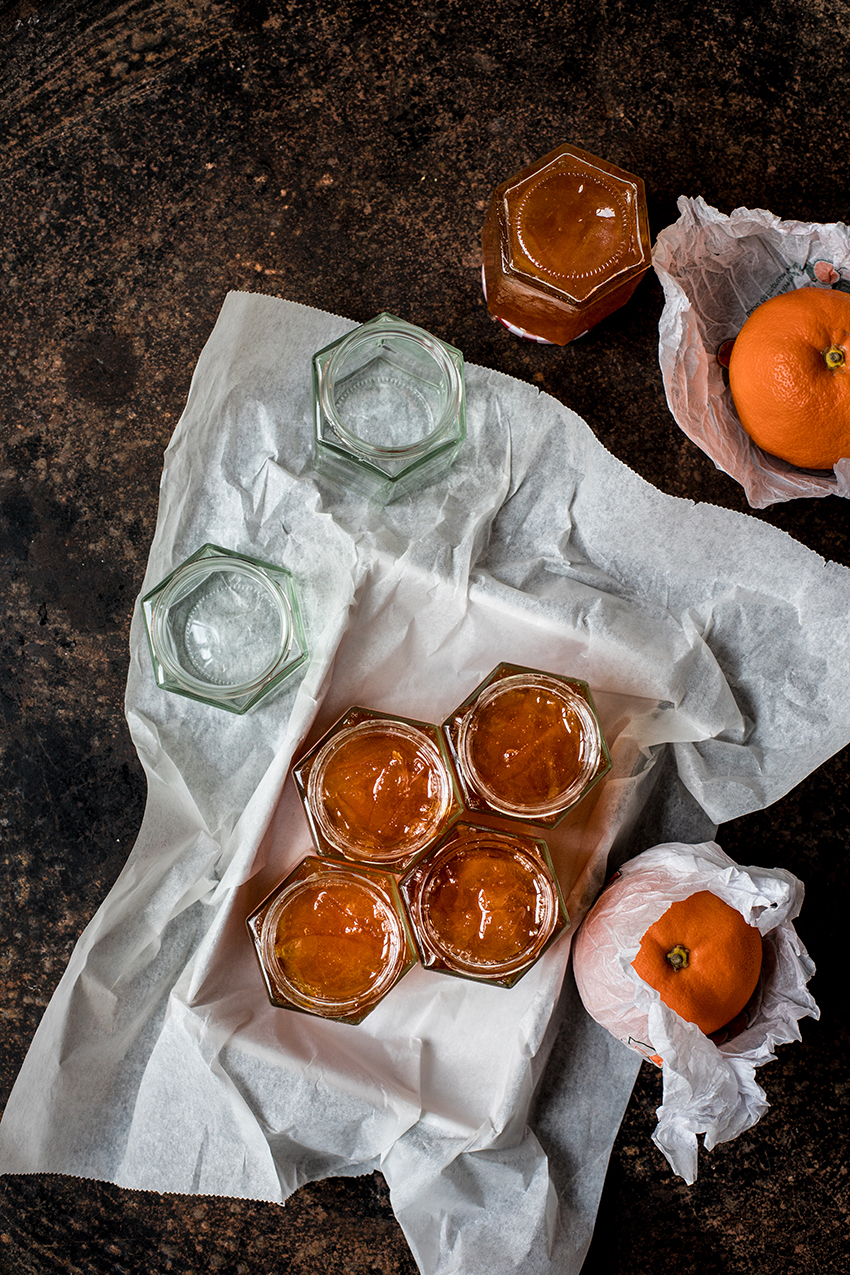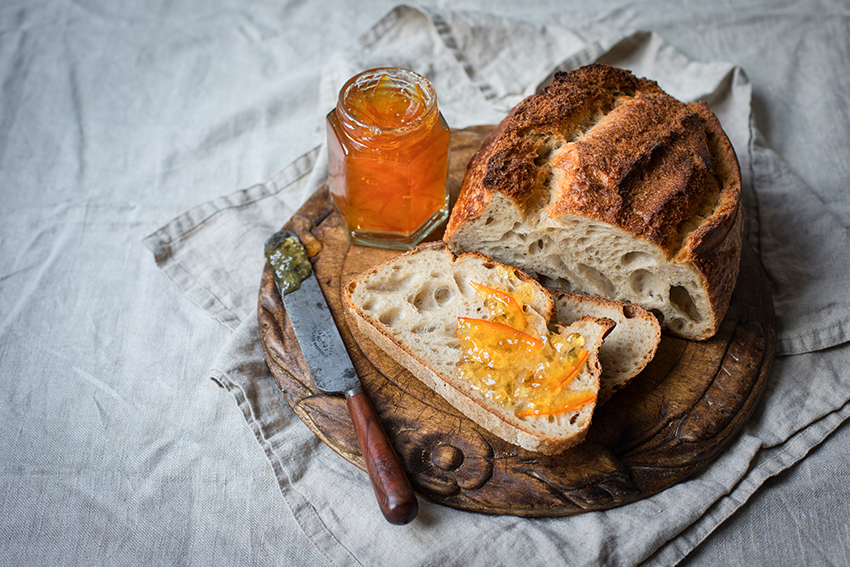The post War & Peace Pudding with Mock Apricot Jam – for the 75th anniversary of ‘Victory in Europe Day’ A Recipe from Pride and Pudding appeared first on Miss Foodwise.
]]>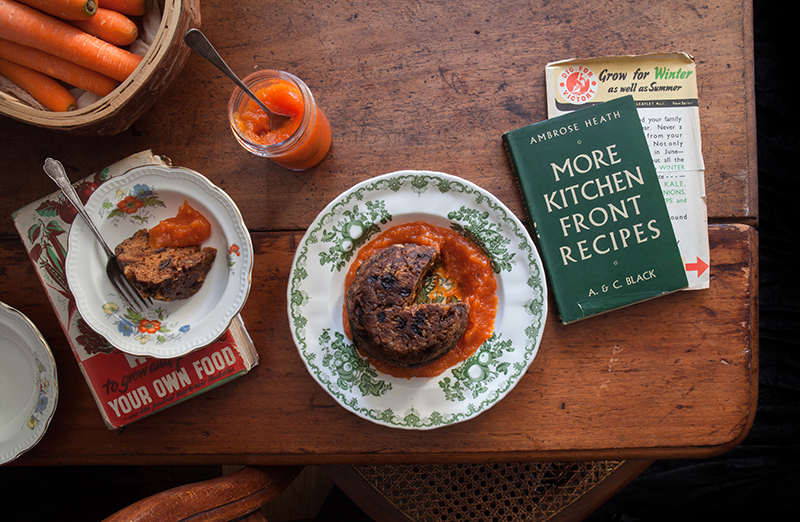
Today 8 may I’ll be showing two war-time recipes over at London’s Borough Market for the 75th anniversary of ‘Victory in Europe Day’ or the end of WWII.
While world wars and lockdown are very different, both have led to difficulties obtaining certain ingredients. We’ll be looking at two war-time recipes that were actually promoted by the Ministry of Food because there was an overload of carrots and potatoes. Recipe booklets were made to help cooks to whip up a variety of recipes with carrots and potatoes and other austere but often very delicious creative recipes
We’ll be cooking up “War & Peace Pudding” with “Mock apricot” carrot jam, both wartime recipes from my book Pride and Pudding. Tune into our IGTV over at Borough Market on Instagram
During wartime, ingredients for plum pudding were hard to come by so the Ministry of Food produced a recipe for a ‘War and Peace Pudding’ made of carrots, potatoes and suet.
The recipe also appeared as a ‘Wartime Christmas Pudding’. Carrots and potato were both promoted by the Ministry of Food because they grew easily and were plentiful, and therefore they were important to keep people healthy. Potato was often used as an alternative to other ingredients in dishes and carrots were used because of their sweet flavour. At some point ‘carrots on sticks’ were sold to children instead of ice cream – which was banned – and ‘toffee carrots’ replaced toffee apples.
This is an excellent pudding and the “mock apricot” carrot jam absolutely sublime and a great novelty for when dinner parties are back allowed!
War & Peace Pudding
Makes 1 pudding in a 14 cm (No. 42) diameter basin (mould)
75 g carrots, grated
100 g potatoes, grated
85 g plain (all-purpose) flour
30 g fresh breadcrumbs
30 g shredded suet
1 teaspoon ground allspice
or mixed spice
1 teaspoon bicarbonate
of soda (baking soda)
2 tablespoons warm water
1 tablespoon mixed dried
fruit, soaked in water, rum or brandy
Method
Preheat the oven to 160C. Prepare the pudding basins for steaming
In a large bowl, combine the carrot, potato, flour, breadcrumbs, suet and allspice. Dissolve the bicarbonate of soda in the water and add to the mixture. On a lightly floured work surface, knead into a ball. Don’t be alarmed if the mixture seems dry, it will come together after kneading it for a few minutes.
Work through the mixed dried fruit and roll the dough into a ball. Put the ball into the prepared pudding basin and push it down. Close the pudding basin off with baking paper and wrap in tin foil. Place on an inverted saucer in a pot large enough for the pudding basin and pour in boiling water to come up halfway the sides of the basin. Close the lid, cover any steaming holes the lid might have and steam for 2 hours.
Serve with carrot jam
“Mock apricot” Carrot jam
500 g carrot puree made from boiled carrots
500 g raw sugar
juice of 1 lemon
zest of 1/2 lemon, grated or cut into fine strips
5 apricot kernels
2 tablespoons brandy
Put the carrot puree in a large saucepan and bring to the boil. Add the sugar, lemon juice and zest and apricot kernels.
Boil until the mixture has thickened and gels quickly when spooned onto a cold plate.
Remove from the heat and take out the apricot kernels if you can spot them. Stir the brandy through the jam and decant into sterilised jars. Close the jars and turn them upside down to cool.
The jam has a hint of apricot; it was marketed as mock apricot jam.
This jam doesn’t keep long and must be stored in the fridge.
The post War & Peace Pudding with Mock Apricot Jam – for the 75th anniversary of ‘Victory in Europe Day’ A Recipe from Pride and Pudding appeared first on Miss Foodwise.
]]>The post Hot Cross Buns – The Tale Of English Buns # 2 appeared first on Miss Foodwise.
]]>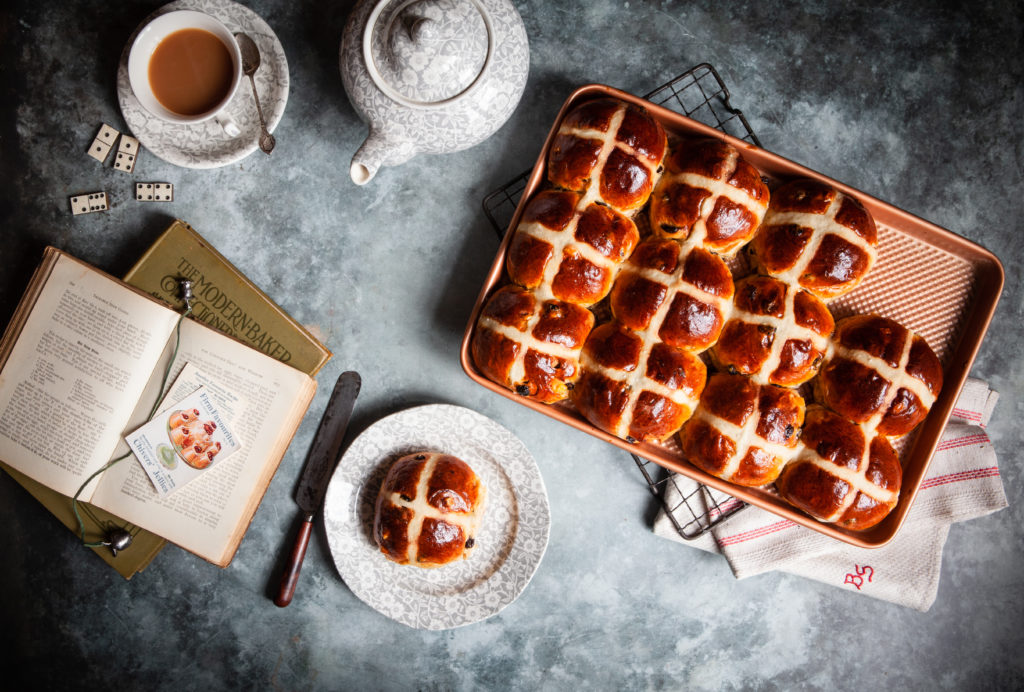 Bake them on Good Friday: The history and tales behind these spiced buns are plenty and intriguing, steeped in folklore dating back as far as Anglo-Saxon Britain. This is perhaps one of the most iconic of buns. Recipe from my new book Oats in the North, Wheat from the South, out with Murdoch Books (2020)
Bake them on Good Friday: The history and tales behind these spiced buns are plenty and intriguing, steeped in folklore dating back as far as Anglo-Saxon Britain. This is perhaps one of the most iconic of buns. Recipe from my new book Oats in the North, Wheat from the South, out with Murdoch Books (2020)
Every year well before Easter Marks & Spencer starts piling up Hot Cross Buns from chocolate & salted caramel to blueberry and marmalade. Marmalade I can understand as you do add candied orange peel to the dough, but chocolate & salted caramel and blueberry just creates a whole different bun, the cross being the only reminder of a traditional Hot Cross Bun. But what is traditional or original with a recipe as old as this one? If you scroll down to the recipe you might discover I too dare to add something which isn’t traditional from time to time.
The tradition of baking bread marked with a cross is linked to paganism as well as Christianity. The pagan Saxons would bake cross buns at the beginning of spring in honour of the goddess Eostre – most likely being the origin of the name Easter. The cross represented the rebirth of the world after winter and the four quarters of the moon, as well as the four seasons and the wheel of life.
The Christians saw the Crucifixion in the cross bun and, as with many other pre-Christian traditions, replaced their pagan meaning with a Christian one – the resurrection of Christ at Easter.
According to Elizabeth David, it wasn’t until Tudor times that it was permanently linked to Christian celebrations. During the reign of Elizabeth I, the London Clerk of Markets issued a decree forbidding the sale of spiced buns except at burials, at Christmas or on Good Friday.
The first recorded reference to ‘hot’ cross buns was in ‘Poor Robin’s Almanac’ in the early 1700s.
‘Good Friday come this month, the old woman runs. With one or two a penny hot cross buns.’
This satirical rhyme was also probably the inspiration of the commonly known street vendors cry:
‘Hot cross buns, hot cross buns!
One ha’penny, two ha’penny, hot cross buns!
If you have no daughters, give them to your sons,
One ha’penny, two ha’penny, hot cross buns!’
A century later the belief behind the hot cross bun starts to get a superstitious rather than a religious meaning.
In London’s East End you can find a pub called The Widows Son, named after a widow who lived in a cottage at the site in the 1820s. The widow baked hot cross buns for her sailor son who was supposed to come home from the sea on Good Friday. He must have died at sea as he never returned home, but the widow refused to give up hope for his return and continued to bake a hot cross bun for him every year, hanging it in her kitchen with the buns from previous years.
When the widow died, the buns were found hanging from a beam in the cottage and the story has been kept alive by the pub landlords ever since a pub was built on the site in 1848.
For whatever reason or belief you choose to bake a batch of hot cross buns on this Good Friday, it will most likely be to enjoy them with your loved ones. May it be for Eostre, Easter, the beginning of a much awaited spring or as a superstitious amulet for when you set sail, bake them with love!
This recipe is a revised version from one that appeared years ago on this site. I advise to use this one.
So here is how you bake your own:
Hot Cross Buns
What you will need
15 g (½ oz) dried yeast
300 ml (10½ fl oz) lukewarm full-fat milk
500 g (1 lb 2 oz) strong white bread flour
60 g (2¼ oz) raw (demerara) sugar or white sugar
1 tsp ground cinnamon
½ tsp ground mace
¼ tsp ground nutmeg
1/8 tsp allspice
1/8 tsp ground ginger
1/8 tsp ground coriander
70 g (2½ oz) butter, at room temperature, cubed
1 egg
5 g (1/8 oz) fine sea salt
150 g (5½ oz) currants
50 g (1¾ oz) candied citrus peel
2 egg yolks + 2 tbsp milk, for egg wash
For the crosses
140-160 ml (5¼ fl oz) water (if your flour is old it needs more water, if fresh 140 will be enough)
75 g (2½ oz) plain (all-purpose) flour
For a 39 x 27 cm (15½ x 10¾ inch) baking tin (if you don’t want the buns to attach to one another while baking, use a larger tray or bake in two batches)
For the shiny glaze:
Melt 60 g plain white sugar in 5 tbsp water
Method:
Add the yeast to the lukewarm milk and stir briefly and gently to activate it. The yeast will start to foam up in clusters, which means it is ready for use. Combine the flour, sugar and spices in a large bowl or the bowl of an electric mixer fitted with a dough hook and put the butter on top. Pour half of the yeast mixture over the butter and start kneading. When the milk and butter are completely absorbed, add the rest of the yeast mixture, along with the egg. Knead for 5 minutes, then let the dough stand for a few minutes (at this point it will be very wet). Add the salt and then the currants and candied peel and knead for 10 minutes, scraping the dough off the dough hook and side of the bowl if needed, until the dough has come together in a smooth and elastic dough that is not too dry but also not terribly wet.
Cover the dough and set aside for 1 hour until it has doubled in quantity.
Meanwhile, line the baking tin with baking paper. Mix the water and flour into a thick batter for the crosses and scoop it into a piping bag with a small nozzle and cover until needed.
Divide the dough into 12 equal pieces. Take a piece of dough and lightly flatten it on your work surface, then pull the outer parts in like a purse and gently squeeze together like a dumpling so that the dough can no longer split open while rising.
Turn the dough over so the squeezed ends are on the bottom. It should be nice and smooth on top – if not, flatten it and start again. Place in the baking tin and continue shaping the other buns, adding them to the tin to form neat rows.
Cover the tray of buns with a light cotton cloth and wrap it in a large plastic bag (I keep one especially for this purpose). Rest the dough for 1 hour or until the buns have doubled in size. Towards the end of the resting time, preheat the oven to 210°C (410°F).
Brush the buns generously with the egg wash, then carefully pipe a cross onto each bun. Transfer to the oven and bake for about 20-30 minutes until golden brown. (if you don’t want to egg wash, just brush on the sugar syrup as mentioned in the recipe, or do both!)
The buns are best eaten on the day they’re made. The next day they can be revived in a hot oven for a few minutes. You can also freeze the baked buns, thaw and then pop them in a hot oven for a few minutes.
These buns are excellent halved, then toasted and spread with copious amounts of farmhouse butter.
Freeze for up to a month. Leftover buns make a perfect Hot Cross Bun and Butter pudding, see my recipe here >
*Letting the dough rest for a while without salt is called an “autolyse”. It allows for enzymes to do part of the gluten development before you start to actually knead it. Adding salt with the yeast can kill it or slow down the process. This way it forms a developed dough more quickly.
RECIPE FROM MY BOOK Oats in the North, Wheat from the South (The British Baking Book (US), Brits Bakboek (NL-BE)) – You can order a copy here >
You might also enjoy (more buns of course):
For Bath Buns go here >
For Cinnamon buns go here >
For Santa Lucia Buns go here
The post Hot Cross Buns – The Tale Of English Buns # 2 appeared first on Miss Foodwise.
]]>The post Bitter Seville Orange Marmalade – A Potted History and How to Make it appeared first on Miss Foodwise.
]]>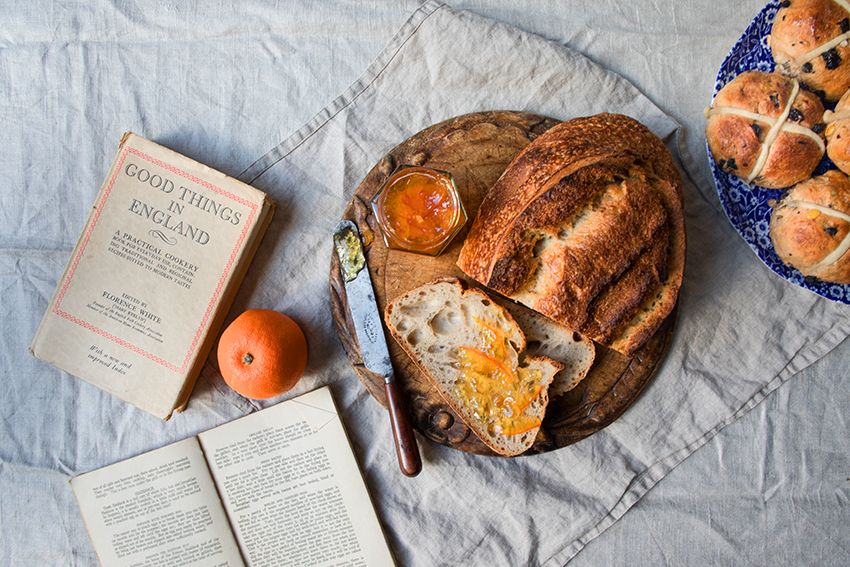
Marmalade is like Marmite, you either love it or loathe it.
Marmalade is loved in Britain, smeared on golden toast as the last course of the English Breakfast. The humble jar of sunshine even has its own Marmalade Awards each year in Cumbria in the North of England. Anyone can send in their jar to be judged by marmalade royalty, and my friend Lisa from All Hallows Cookery School in Dorset just won with hers.
In a time when bitter flavour is bred out of vegetables and fruits, you would think many people are not that fond of marmalade. Marmalade is traditionally made from bitter Seville oranges. Originally from Asia, the Moors introduced these oranges in Spain around the 10th century. They are quite inedible in their raw state and if you can manage I salute you. Because of their sourness Seville oranges contain a high amount of pectin. In 17 and 18th century cookery books they get a mention as ‘bitter oranges’ and it wouldn’t be an British classic without a story.
The legend
In the mid 18th century a Spanish ship carrying Seville oranges was damaged by storm. The ship sought refuge in the harbour of Dundee in Scotland where the load deemed unfit for sale were sold to a local merchant called James Keiller. James’ mother turned the bitter orange fruit into jam and so created the iconic James Keiller Dundee Marmalade. It wasn’t a coincidence that James mother made marmalade, in the 1760s her son ran a confectionery shop producing jams in Seagate, Dundee. In 1797 he founded the world’s first marmalade factory producing the first commercial brand of marmalade. In 1828, the company became James Keiller and Son, when his son joined the business. Today you can see stone James Keiller and Son marmalade jars pop up at every carboot sale and antiques market. But the marmalade is still in production, only now in glass jars that off the beautiful radiant orange colour that is so typical of marmalade.
The truth as clear as marmalade
According to Ivan Day, a prominent food historian who I was lucky to do a course with, one of the earliest known recipe for a Marmelet of Oranges dates from around 1677 and it can be found in the recipe book of Eliza Cholmondeley held in the Cheshire Archives and Local Studies.
The earliest recipe in Scotland is titled ‘How to make orange marmalat’ and dates back 1683. It can be found in the earliest Scottish manuscript recipe book which is believed to have been written by Helen, Countess of Sutherland of the Clan Sutherland. The book is dedicated entirely to fruit preservation and jelly making. According to The Scotsman “The Countess was married to John Gordon, the 16th Earl of Sutherland, an army officer who was honoured following the defeat of the 1715 Jacobite rebellion.”
This bit of information transports me right to the wuthering heights of Scotland.
This early Scottish as well as English recipe debunks the myth that mother Keiller invented marmalade. Recipes for similar preserves even date back earlier in history. But the Keiller family definitely deserve a prominent spot in marmalade history.
But why do we call it marmalade and not jam?
As you maybe remember from my posting about ‘Quince Cheese’ here > , quinces are responsible for the word marmalade as their Portuguese word is ‘marmelo’ and they were made into fruit cheeses named marmalades. In Spain they call it ‘Membrillo’. Quince just like bitter Seville oranges, contain a lot of pectin and they are both too sour to eat raw. From both of these fruits the pips and peels are used to get a good set, and if you don’t have quince you could easily make a fruit cheese out of these oranges.
If you’re a marmalade fan, chances are you have a particular favourite. You either love every jar that you can find on your breakfast table or you prefer either thick cut, thin cut, or vintage. The cut of course refers to how thick the peel is cut, I like mine as thin as possible. Vintage is a jar you left in the back of your preserve cupboard to age and turn dark amber in colour and deep in flavour. Then there are two kinds I don’t really want to include in the different types of marmalades and that is the flavoured kind, this could be spices, whisky or any other type of booze. I can understand whisky and grand marnier, but as I’ve made marmalade with cardamom, I have to conclude that that jar was something entirely different to marmalade. When it comes to preserves I’m quite the purist. If additions flavour and not just compliments the taste of the fruit, it’s a big no no for me.
What makes a marmalade
There is something to be said about sugar as well. Some use plain white sugar, others use demerara (cane sugar), others use molasse or jam sugar (minut sugar). You don’t need the added pectin of jam sugar, I find molasse to be too dominant, white sugar from sugar beets is something I hardly use except for jam so I decided to use 2/3 of plain white sugar and 1/3 demerara. I don’t want my marmalade to be dark in colour, I want it to be beautifully bright orange.
And finally the fruit… without wanting to be a food snob, organic or untreated bitter oranges are your only option. Remember that you will be using the peel so your fruit needs to be of the best quality. Many Seville oranges are harvested from trees which grow by the road and in the city. These are dirty oranges. I like to know what I put in my jam jar so it’s better to be safe and buy organic. This isn’t sponsored in any way but I’ve found Ave Maria is a farm that sells organic Sevilles, they are stocked in some British supermarkets (ask them on twitter).
I’ve looked at a couple of recipes and the ingredients and method is usually identical. Before I share my recipe (which is identical to many out there) I’ll leave you with some links for you to look at.
Felicity Cloake for The Guardian: How to make the perfect marmalade >
Giulia Scarpaleggia, my dear Italian friend who has access to the best oranges and makes this marmalade every season in big batches: Bitter Orange marmalade and nothing else >
Orange Marmalade
What do you need
- 1 kg bitter organic oranges (no compromise!)
- 1 large lemon
- 2,5 l water
- 500 g demerara sugar
- 1500 g castor sugar
Equipment
- Stainless steel pot
- Muslin
- a selection of sterilised jars
- a juicer if you have one
- a jam thermometer
Method
(I like to do the prep the evening before, then let it sit overnight, you can however do it in one day)
Juice all your oranges and the lemon, keep the pips and all the bits aside. Place the square of muslin cloth in a bowl and crape the pips and bits into it, close with a twine long enough so you’re able to tie it to the outside of the pot.
Finely slice the peels of the oranges, the thickness is your choice, I like the thinnest I can manage and use my sharpest knife for this. Transfer the shredded peel to the pot, tie the parcel of muslin to the pot and pour over the juice and the water then bring to a boil and leave to simmer for 2-2,5 hours. This is to soften the peel, if you like a bite to the peel, check regularly from 2 hours towards the end of the cooking time.
Leave to cool then remove the muslin parcel and squeeze it as hard as you can to get out as much of the juice as you can.
Now to make the marmalade bring the juice back to a simmer and add the sugar, stir well until it is completely dissolved. Bring to a boil, place a saucer or two in the fridge or freezer and check the temperature to reach 104 degrees – which is when the jam should be setting. Test a bit of jam on one of the cold saucers to see if it sets, if not, continue to boil and try again, and again if needed.
When the marmalade is setting, leave to cool for a few minutes before filling your jars.
After filling I still invert the jars because that is what my grandmother and mother did, but you can add wax or boil again in the jars, whatever method you’re used to.
Use on your hot toast or in cakes or puddings!
Next week… Hot Cross Buns revised!
The post Bitter Seville Orange Marmalade – A Potted History and How to Make it appeared first on Miss Foodwise.
]]>